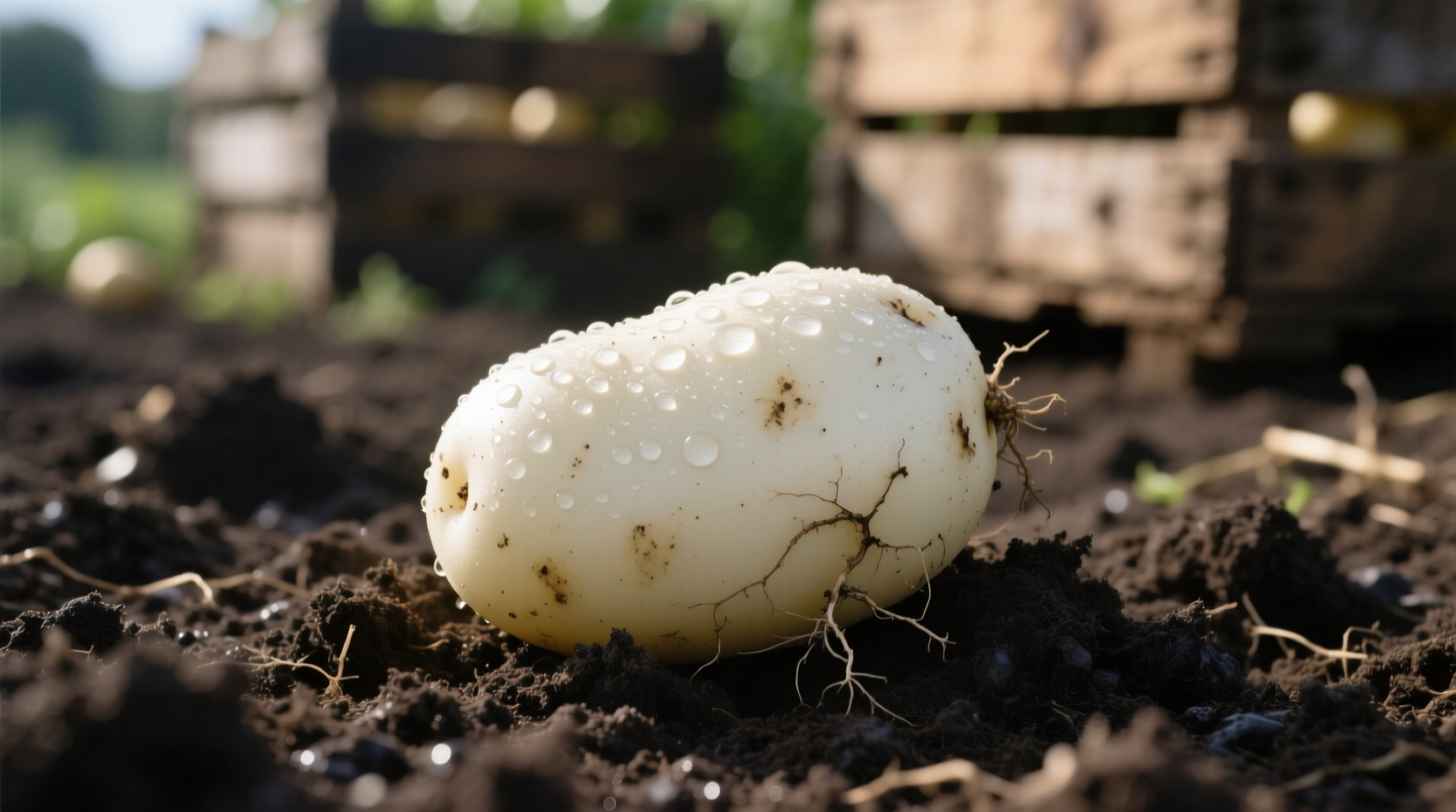Discover why white potatoes deserve a permanent spot in your kitchen pantry. These versatile tubers bridge the gap between waxy and starchy varieties, offering the perfect balance for countless culinary applications. Whether you're preparing weeknight dinners or holiday feasts, understanding white potatoes' unique properties transforms ordinary dishes into extraordinary meals.
What Exactly Are White Potatoes?
White potatoes represent a distinct category within the Solanum tuberosum species, characterized by their medium starch content (15-18%) and balanced moisture levels. Unlike russets with their high starch content or red potatoes with their waxy texture, white potatoes maintain structural integrity while still achieving creamy results when properly prepared.
According to the USDA Agricultural Research Service, white potatoes typically feature:
- Thin, light brown to tan skin
- Creamy white flesh that resists darkening
- Medium density (neither too dense nor too fluffy)
- Approximately 70-75% water content
| Potato Variety | Starch Content | Best Cooking Methods | Storage Duration |
|---|---|---|---|
| White | Medium (15-18%) | Boiling, steaming, mashing, salads | 2-3 months |
| Russet | High (20-22%) | Baking, frying, roasting | 3-5 months |
| Red | Low (12-14%) | Salads, soups, roasting | 1-2 months |
| Yukon Gold | Medium-High (17-19%) | Mashing, roasting, gratins | 1-2 months |
This comparison, verified through research from the University of Maine Cooperative Extension, demonstrates why white potatoes excel in applications requiring both structure and creaminess. Their balanced composition makes them the culinary "Goldilocks" variety—neither too starchy nor too waxy.
Optimal Culinary Applications for White Potatoes
White potatoes shine in specific cooking scenarios where texture balance matters most. Professional chefs consistently reach for them when preparing dishes that require potatoes to maintain shape while delivering creamy interiors.
Perfect Boiled Potato Dishes
When boiling white potatoes, follow these science-backed techniques from the American Culinary Federation:
- Start in cold, salted water to ensure even cooking
- Maintain a gentle simmer (180-190°F) rather than vigorous boiling
- Cook until fork-tender (typically 15-20 minutes for whole medium potatoes)
- Drain immediately to prevent overcooking
These methods preserve the potatoes' structural integrity while developing optimal texture. For potato salads, cool the potatoes completely before mixing with dressing to prevent mushiness.
Mashed Potatoes with Ideal Consistency
White potatoes create exceptionally smooth mashed potatoes without becoming gluey. The University of Idaho's Potato School recommends:
- Peel and cut potatoes into uniform 1-inch cubes
- Cook until completely tender (test with a knife)
- Use a ricer or food mill instead of a blender
- Add warm dairy gradually while mashing
This approach maximizes starch gelatinization while minimizing the release of excess starch that causes gumminess—a common problem with russets when overworked.

Nutritional Profile and Health Considerations
White potatoes offer significant nutritional benefits often overlooked in contemporary diets. A single 5.3-ounce serving (about the size of a computer mouse) provides:
- 110 calories
- 26 grams of carbohydrates
- 2.5 grams of fiber (10% of daily value)
- 45% of the daily value for vitamin C
- 620 mg of potassium (18% of daily value)
- Negligible fat and sodium
Research published in the American Journal of Clinical Nutrition confirms that potatoes consumed with their skin provide resistant starch when cooled, which functions as a prebiotic fiber supporting gut health. This effect peaks after refrigeration for 24 hours, making properly prepared potato salad a surprisingly beneficial dish.
Selection, Storage, and Preparation Guidelines
Maximize your white potatoes' shelf life and culinary potential with these evidence-based recommendations from the USDA Food Safety and Inspection Service:
Selection Criteria
Choose white potatoes that:
- Feel heavy for their size (indicates higher moisture content)
- Have smooth, unblemished skin without green patches
- Show no signs of sprouting or shriveling
- Measure between 1.5-3 inches in diameter for most applications
Optimal Storage Timeline
Proper storage dramatically extends white potatoes' usability. Follow this verified timeline from Cornell University's Food Science Department:
- 0-2 weeks: Store in cool (45-50°F), dark, humid environment
- 2-6 weeks: Transfer to slightly warmer (50-55°F) location if not used
- 6+ weeks: Discard if sprouting begins or texture becomes soft
Avoid refrigeration, which converts starch to sugar and creates off-flavors when cooked. Never store potatoes near onions, as ethylene gas from onions accelerates sprouting.
Common White Potato Mistakes to Avoid
Even experienced cooks make these critical errors with white potatoes:
- Overcooking: White potatoes become waterlogged beyond 20 minutes of boiling. Set a timer and check frequently.
- Using cold dairy: Adding cold milk or butter to hot potatoes causes uneven texture. Warm dairy ingredients first.
- Peeling too early: Peeling immediately after cooking removes valuable nutrients and causes water absorption. Cool slightly first.
- Improper cutting: Uneven pieces lead to inconsistent cooking. Use a sharp knife for clean cuts that prevent disintegration.
Professional chefs at the Culinary Institute of America emphasize that understanding these nuances separates adequate potato dishes from exceptional ones. The key lies in respecting white potatoes' balanced composition and adjusting techniques accordingly.











 浙公网安备
33010002000092号
浙公网安备
33010002000092号 浙B2-20120091-4
浙B2-20120091-4